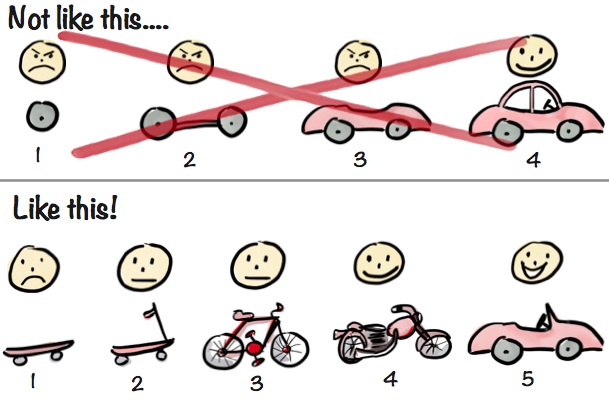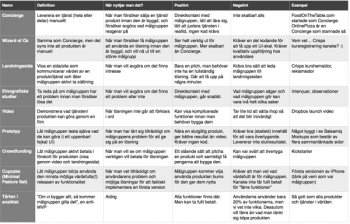(French translation, Spanish translation, Japanese translation)
A couple of years ago I drew this picture and started using it in various presentations about agile and lean development:
Since then the drawing has gone viral! Shows up all over the place, in articles and presentations, even in a book (Jeff Patton’s “User Story Mapping” – an excellent read by the way). Many tell me the drawing really captures the essence of iterative & incremental development, lean startup, MVP (minimum viable product), and what not. However, some misinterpret it, which is quite natural when you take a picture out of it’s original context. Some criticize it for oversimplifying things, which is true. The picture is a metaphor. It is not about actual car development, it is about product development in general, using a car as a metaphor.
Anyway, with all this buzz, I figured it’s time to explain the thinking behind it.






